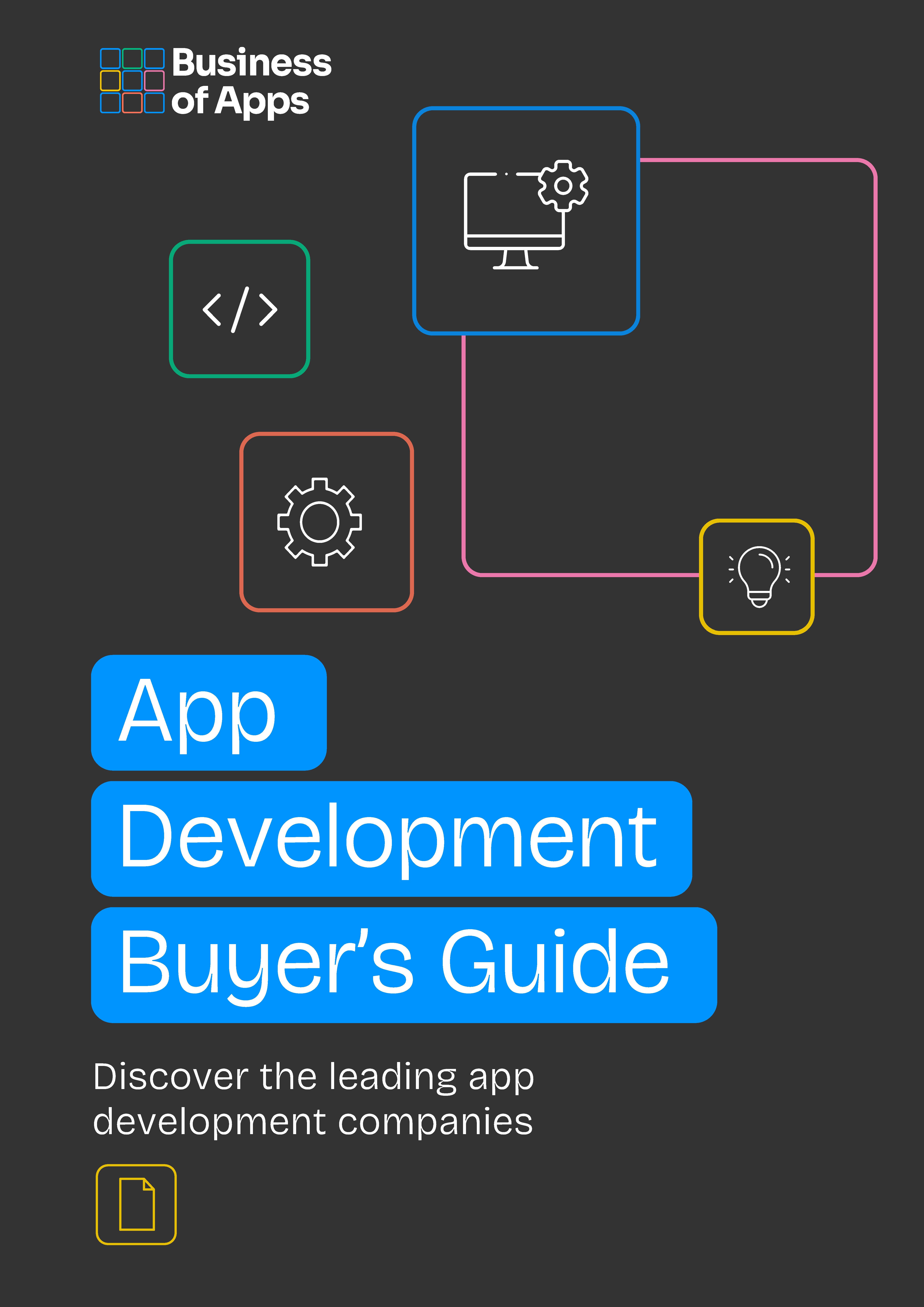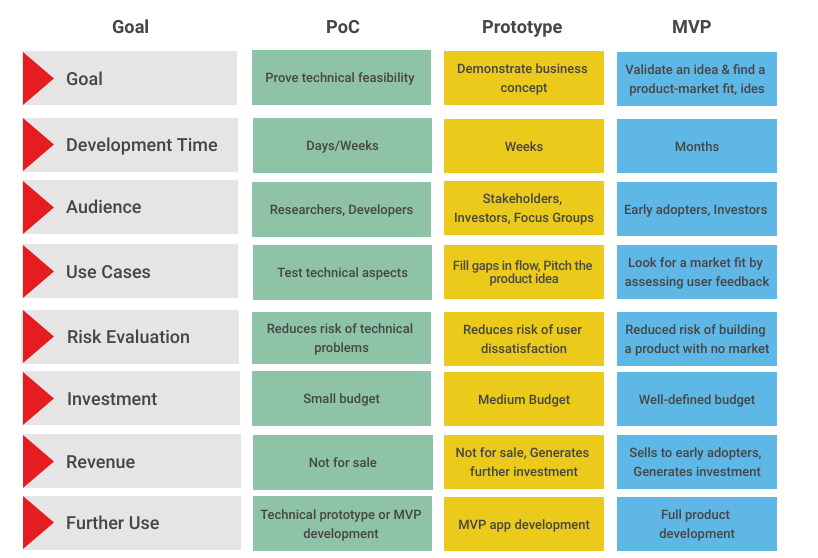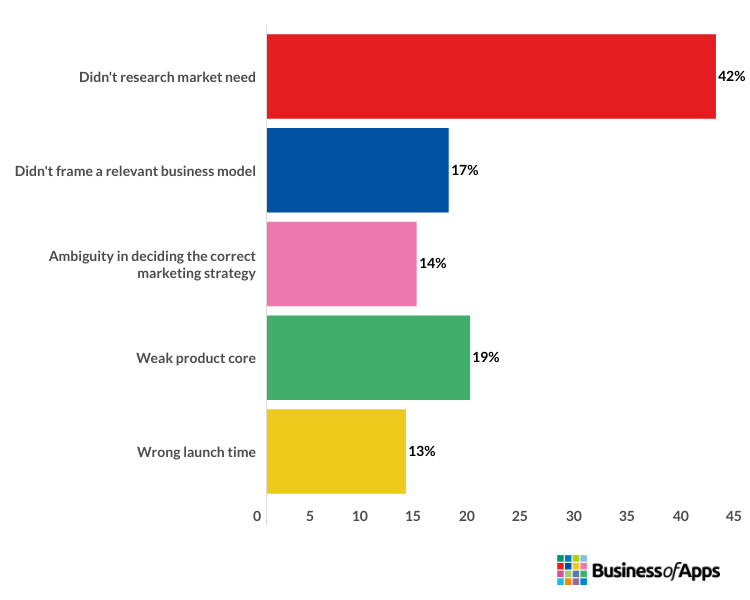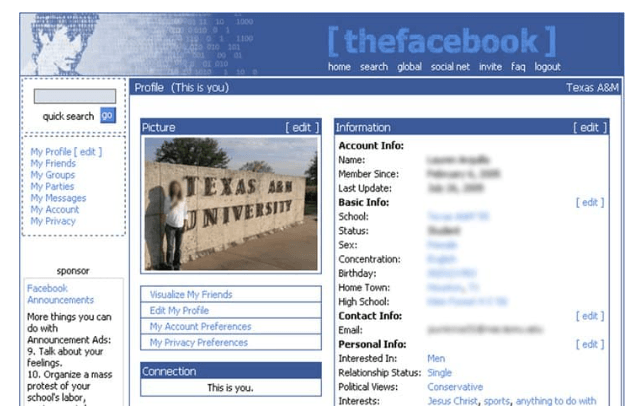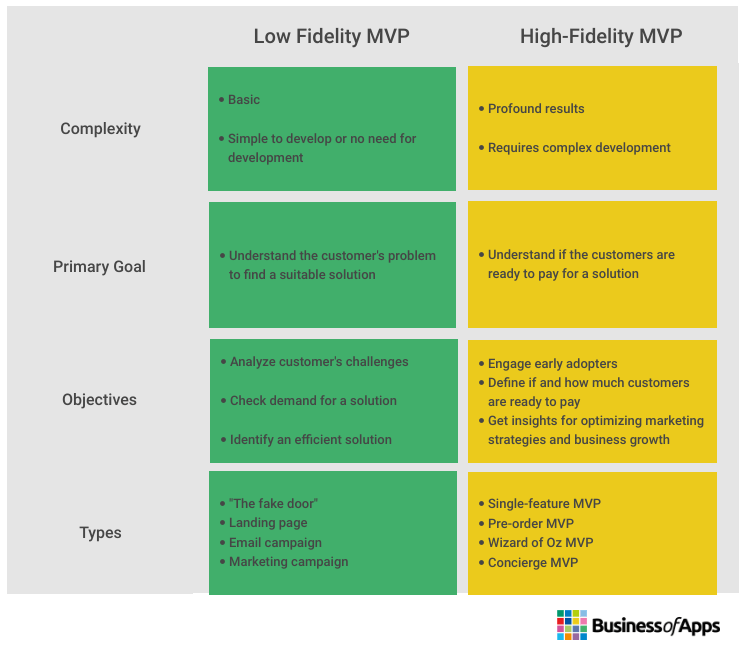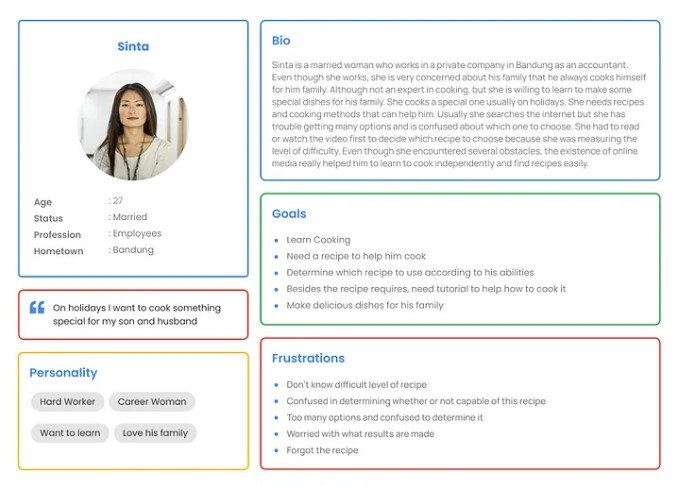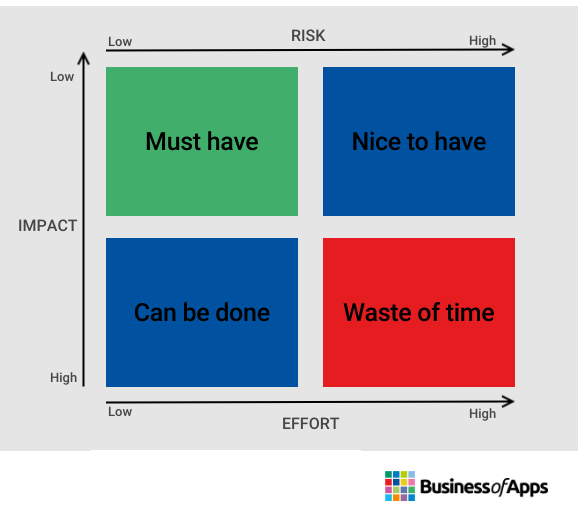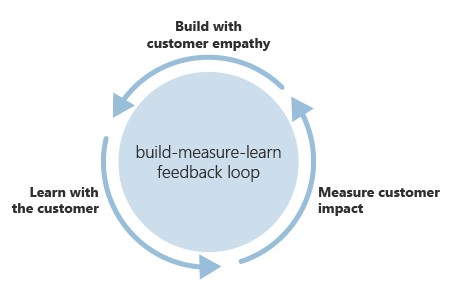App ideas can sound brilliant in theory. But the reality of developing and launching a successful app is complex. App users are fickle, and engagement levels can drop fast if an app doesn’t match their needs or UX is too complicated. But this is where MVP app development can help. Containing the bare essential features, MVP apps enable feedback from early-stage adopters and make way for improvements.
MVP agile apps encourage developers to launch early, nascent app versions to test with users. And a classic example is ‘thefacebook’ which launched as an MVP in 2004 for Harvard students to stay connected and post messages on boards. When their idea proved popular, the founders added more features and made further iterations. Then, with enough feedback, testing, and evidence, Facebook, as we know it today, launched in 2006 and became the world’s most popular social media site.
To explain more about the importance of developing MVPs for apps, this research paper will uncover details behind the MVP app development process. Including examples of MVP templates, we’ll offer tips on developing MVP apps. With more knowledge and research gleaned from this piece, you should have a deeper understanding of why MVP apps are essential. But also how they avoid wasted resources and streamline development duration. With the right approach to MVP planning, you should be better placed to maximize ROI and ensure reliable and steady revenues.
Featured App Developers
What is a Minimum Viable Product (MVP)?
A Minimum Viable Product (MVP) has the bare minimum features ready to launch in the market and attract early adopters. But, rather than only expediting an app’s time-to-market, MVP apps are an important stage for app development. By gaining insights and feedback on an app from early adopters, MVP apps are a vital stage in the app development process. They also allow developers to learn from initial versions and use insights to optimize app development.
A term first coined by Frank Robinson, ‘Minimum Viable Product’ became more popular by Eric Ries, the founder of the Lean Startup methodology. According to Ries, an MVP is the version of a new product that allows a team to gather the maximum amount of proven customer knowledge with the least amount of effort. An MVP is also a vital stage in Agile app development and in particular Scrum.
App Development Buyer's Guide
Download our App Development Buyer’s Guide to get a full list of the best service providers on the market to choose from. You will also learn about types of app developers, different app development platforms, app developer locations, app development costs, how to select the right one for your business, as well as the questions to ask any of those companies you will be evaluating.
MVP characteristics in app development
So what is MVP app development, and which particular characteristics would define it as such?
- Serves as a starting point: MVP apps should serve as a starting point, not a finishing point. MVP planning should include room for user feedback and use this to iterate and improve on future versions.
- Features the essence of an app idea: Remember that MVP apps contain the bare essential features and functions of an app. So, MVP apps shouldn’t contain add-ons or extra features. Instead, they need to showcase basic functionality for target users to provide feedback on their experiences.
- Shows how much value users should expect: MVP app development should factor in user pain points and determine a value proposition. Once launched, an MVP should offer users a strong signal of the value they could expect from using the app.
- Assumes market growth and ROI: In a paper by Rancic Moogk, D. (2012) entitled “Minimum Viable Product and the Importance of Experimentation in Technology Startup”, the author suggests startup founders assume an app will offer both user value and ROI through market growth. But MVP apps are effective in giving users a sense of the value they should expect and developers a sense of potential ROI.
- Offers low cost and fast production: MVP apps should be fast, lean, and scalable. They should offer the bare bones of functionality. And, because of this, production costs should be low too.
MVP, POC, or Prototype: What’s the difference?
A further way to define an MVP app is to compare it with other pre-production stages such as Proof-of-Concept (POC) and prototyping. To clarify, an MVP should always be released as an end-stage product, following the prototype stage. And its purpose should be to confirm and validate an app idea using user feedback. To clarify this, we’ve used the comparison chart below which highlights the differences between each testing format.
Comparison chart: PoC vs Prototype vs MVP
Source: techmagic.co
MVP in Agile app development
The MVP app development process follows a specific methodology based on an Agile Way of Working (AoW). MVP agile enables companies to release regular updates, learn from feedback, iterate new versions, and focus on user needs. Some senior-level execs and board members may insist on having the end product ready before release. But developers can overcome this by involving stakeholders in their AoW development process. Finding ways to include them in decision-making may also deepen leadership’s engagement and help them appreciate the advantages.
In their paper “Agile Development in Meteorological R&D: Achieving a Minimum Viable Product in a Scrum Work Setting”, Cerff et al (2018) suggest the Scrum approach fits well with MVP agile app development. And it may be that this comes down to its non-traditional approach and use of fixed development resources. For scrum MVP app development to be effective, teams of between three to nine people should focus on working in sprints. And they should do this with the inclusion of a Product Owner and Scrum Master. By running scrum sprints, teams can become self-directed. The Product Owner should oversee the bigger picture and the Scrum Master should help team efforts match PO intentions. And they can both do this with a well-choreographed and tightly-planned process of weekly sprints.
Why MVP apps are important for mobile app development
Launching an app comes with uncertainty. So how can developers be more sure their app will sell? MVP app development lets startups dip their toes into a market’s waters and test their app ideas. MVP apps help developers learn about user behavior, target markets, current techniques and features. But they also help to understand the best development paths that can support growth projections. And, in a counter-intuitive way, by launching an early and unfinished product to market, MVP apps can bring a complete app product to market sooner.
MVP app development can also help mitigate the risk of long-term failure. For instance, NMG Technologies revealed how 80% of apps have a survival rate of under 12 months. And our own data reflects that mobile apps lose around 77% of Daily Active Users (DAUs) within three days of installation. Reasons for such sharp rates of disengagement range from poor designs and ineffective marketing strategies to inadequate launch plans or not working with the right long-term development partners.
Further data shows almost half of all respondents whose apps failed say it’s because they didn’t carry out enough research into market needs. So, a successful app launch warrants extensive research. Areas should include market needs, user behaviors, target markets, trending features or techniques, and establishing the optimal development path.
Reasons for app failure chart
Source: Business of apps partner post from Octal IT solution
As part of the preparation for your app launch, MVP apps help to lay the groundwork for success using effective feedback. Developers may have a great idea, execution plan, and solid MVP development process. But good MVP planning should include a plan for gathering and act on user feedback. Because the MVP development process apps can help to mitigate the problem of early attrition, developers should focus on creating feedback loops. Doing so can enable faster releases and quicker fixes which keeps users engaged and avoids the loss of momentum. Metrics for inclusion may be:
- Percentage of active users
- Number of paying users
- Client acquisition costs
- Churn rate
- Client Lifetime Value (CLV)
Through regular testing-and-learning iterations, the MVP approach can also lead to increased scale and greater investments. The paper by Rancic Moogk, D. (2012) highlights this and outlines our previous Facebook example as a model of investment. At six months old, Facebook acquired 150,000 registered users and used this evidence to secure its first $500,000 investment. But shortly after, Facebook raised an extra $12.2 million based on producing revenue from different types of ads and sponsored groups.
Within this short time period, Facebook amassed 3.85 million users, 60% of whom logged on daily. But increasing from 150,000 users at six months to 3.85 million users at 14 months validated Facebook’s growth hypothesis. And it provided the evidence needed for a sizable investment.
Screenshot of the thefacebook MVP circa 2004
Source: arkenea
It’s also worth noting that, in their article “Minimum Viable Products for Internet of Things Applications: Common Pitfalls and Practices”, Nguyen-Duc et al. (2019) showcase a number of examples of MVP app development from Internet-of-Things (IoT) startups. Their report shows MVP planning and creation times can vary from three months to twenty-eight months. And in one instance, the MVP was simple enough to need only three months for conceptual design and sketching features. And the team focused mostly on frontend development.
But a second example showed a much longer completion time due to the complexities in hardware design, but also the part-time working schedules of the founders. They used in-house support to produce and design certain elements, which reduced delays. So, to create an accurate estimation of planning time, you should consider the many elements and aspects involved in the process.
MVP app development process
MVP apps have a better chance of success when they’re born out of a well-planned MVP development process. We’ll get into each stage in that process in this section, but before we do let’s cover some of the traditional types of MVP apps.
MVP app types
Two broad categories divide MVP apps into types: Low-Fidelity and High-Fidelity. Low-fidelity MVPs can test potential demand or impact. They’re often simple formats or “shells” that give the appearance of being a functional app for the purpose of checking for the problem and creating a solution for it.
On the other hand, the high-fidelity MVP type appears as a working version of an app. They’re a way to engage with early app adopters, creating those feedback loops you need to iterate further versions and optimize an app.
Low-fidelity vs. High-fidelity MVPs
Source: Keyua.org
You can divide high-fidelity MVP apps into further subcategories:
- Single-feature MVP: A single-feature MVP app tests how target users accept certain features. It’s the most traditional and fastest to set up.
- Concierge MVP: Helps users achieve their goals through human assistance and moderation. Humans will take the form of AI but test out hypotheses before development.
- Wizard of Oz MVP: Gives the impression of a functioning and automated app but is also run by humans with manual operation. Use for testing an app hypothesis.
- Pre-order MVP: Targets users to pre-order an app. Startups can gain early adopters and generate revenue through prepayments.
- Piecemeal MVP: Uses existing resources and tech infrastructures to build a testing app instead of creating it from scratch. Fast and cost-effective.
How to build an MVP for your mobile app
Engaging with MVP app development involves following a step-by-step plan. Developers should carry out their work using an MVP template, which this section lays out as a series of recommended steps.
Identify the core problem users are looking to solve
The first stage in the MVP development process is determining the need for an app. You should identify any market needs or gaps for planned services. But also understanding users’ pain points and conceiving an idea that improves their lives or experiences will boost your chances of success.
After identifying a need, you can build a set of hypotheses based on app user behaviors. AIBY app development defines the structure of these hypotheses across four subtypes:
- Behavioral: Imagine users of an app in various circumstances and try to assess what would motivate them to act in a certain way
- Problematic: Review the difficulties users experience and the reasons why they see obstacles in their way toward reaching their goals.
- Motivational: Users will have certain desires or may have ways they want to express themselves that they can’t fulfill with the current range of apps.
- Blocker: The blocker hypothesis is a way to reveal what could stand in the way of users and lead to ineffective behaviors or difficulties.
Carry out market research
As part of any drive to pinpoint the core problem users need to solve, marketers and developers should always conduct market research. This may take the form of gaining user insights through semi-structured interviews, which Nguyen-Duc et al (2019) highlight as being a common approach to collecting relevant data, allowing for improvisation and exploration. And while an MVP approach will allow for observations of user behaviors and for feedback, MVP apps should launch from a place of data collection.
For example, Indonesian freelance designer Hazwo set out details of their case study on targeting the needs of users of a recipe app. Their idea was to create an app that helps young mothers find food recipes and instruct them based on differing levels of cooking ability. By carrying out a series of interviews with four young mothers, Hazwo identified the following pain points for their recipe app to address:
- Struggling to find the right recipe from an app or website
- Can’t determine the level of recipe difficulty
- Need information from a trusted source
- Overwhelmed with options for recipes
- Can’t always find a video tutorial to instruct on preparation
Identifying these outcomes from interviews will leverage information to create user journeys and customer personas.
Screenshot of User Personas from recipe app Case Study
Source: Medium
Conduct a competitor analysis
Live-action streaming and short video apps are now some of the most popular ways to engage app users. Recent reports also show over 80% of consumers trust peer recommendations via UGC over other types of ads. So, as part of the MVP development process, it’s important to understand what similar or competitor apps are doing to engage users.
Getting an app to market fast is also often an objective for many. But as our previous directory partners have highlighted, Google is the perfect example of a successful later-to-market product that launched among a market of 14 competitors. They gained the advantage by offering a better, more logical approach to search which appealed to users. By targeting user needs, Google sets itself apart from the competition and gained the largest market share in search.
Create a plan
As a fundamental element of the app development process, an MVP approach works best through an Agile methodology. This approach should include a robust plan for achieving long-term goals. And some aspects you may want to include in your long-term planning include:
- Outlining success criteria: Envisaging perceived outcomes and planning metrics can help to ensure you’re on track to reach your goals. Metrics to plan for could include number of downloads, percentage of active users, and average user ratings.
- Determining long-term goals: It’s important to consider your long-term goals with your MVP app launch. For how long will you gather feedback and how intensive will that be? Planning your long-term goals can make a significant difference to
- Working on a management plan: Your plan should include an idea of how to assemble the right team and determine which stakeholders you’ll target.
Identify features and services
Having identified the problem that needs, you can move towards ensuring your planned MVP includes the core features that address those needs. And as the name says, your app product should contain the ‘minimum’ viable features and functions for testing. Bear in mind that each feature must also link back to solving the problem and enable users to experience app functionality that helps them solve their perceived problems.
One way to approach this is to use feature prioritization. This often happens before the MVP app development occurs but is also useful during the inspection phase, following initial MVP deployment. Feature prioritization is a method of identifying which features are most likely to fulfill the objectives of the product and test this hypothesis. Also, product teams value feature prioritization to drive the project roadmap and define work boundaries.
Feature priority matrix
Source: Decode
To help you consider how to engage in feature prioritization for your MVP app, mobile app development agency DECODE recommend using a bespoke matrix. And this is helpful for prioritizing core features using assessments based on the amount of effort, impact, or risk they pose
- Impact: What is the impact of each feature? Will adjustments to these features have a lower impact?
- Effort: This describes the time, labor, and resources needed to produce the feature.
- Risk: How difficult will it be to develop a feature, and how much time or cost would it need?
Create a prototype
Creating a prototype is an important step in the MVP development process. Prototyping enables teams to test out the user journey with focus groups and internal stakeholders. But they also allow developers to iron out glitches or bugs while validating UI and UX. And since prototypes are a necessary stage in app development, before releasing an MVP to external audiences you should include testing of functional and non-functional elements.
In the report by Nguyen-Duc et al. (2019) authors highlight an example of a mobile app development start-up company, formed in 2013 with 20 people, now focused on Internet of Things. The report highlights how they decided to hire external contractors to support their prototype development, based on faster delivery times. So, you may find it beneficial, if under tight timeframes, to work with external partners.
Build the MVP
With a prototype developed and tested, it’s now time to use the intelligence you’ve gleaned during that process to build the MVP template. And while launching an MVP into the market is the most important part of the MVP app development process, you should have completed 90% of it before getting to this point.
When launching your MVP, be mindful of loading times. Users are prone to dropping apps fast if they encounter lag. It’s also important to focus on app stability. For example, a 1 second delay in loading times can reduced conversions by 20% for retail and e-commerce apps.
Launch the MVP
To gain the feedback you need to iterate and develop each version, make sure to start a well-planned marketing campaign. This should include launching the MVP app to the Google Play and Apple App Stores. Make sure you can receive in-app reviews and reviews on the app stores. Be clear about which stakeholder groups and user types you’re targeting and ensure they’re engaging in the way you want them to.
Monitor performance and gain feedback
The principal reason for launching an MVP is to gain feedback from active users so you can iterate future versions. So, while your prototype must be ready to go and contain all the minimum features, you also need to ensure you don’t spend too much time overdeveloping the app. At this stage, after launch, developers can refer back to metrics and targets outlined in their plan and track the app’s progress against these:
- Percentage of active users
- Number of paying users
- Engagement levels
- Levels of word-of-mouth attention
- Client acquisition costs
- App store ratings and reviews
- Churn rate
- Client Lifetime Value (CLV)
Gaining qualitative feedback from users in the form of reviews can also provide a deeper understanding of your pain points and uncover commonalities that you could improve on.
Build, Measure, Learn feedback loop
Once they’ve obtained the feedback, developers should analyze and prioritize which ones to improve. And move fast to do so. This process should then lead to the formation of a feedback loop defined as Build, Measure, Learn.
In their paper “Innovation in the digital economy”, Microsoft defines innovation as needing a balance between invention and adoption. But MVP app development can target adoption through customer feedback. With strong engagement during the MVP development process, developers can often create better products while gaining faster market adoption at formal release.
Build, Measure, Learn feedback loop model
Source: learn.microsoft.com
Tips for MVP app development planning
MVP apps give startups and established companies the chance to test, learn, and iterate before a formal app launch. MVP apps also help to get an app to market fast. So what can developers do to maximize their chances of success with this?
- Make sure you validate the business idea. Have a viable hypothesis, and use the MVP development process to confirm it.
- Plan and deliver on your MVP app development using a Scrum MVP approach.
- Include teams of three to nine people in your MVP scrum development.
- Conduct thorough market research and fully understand users’ needs prior to app launch.
- Be clear on who your competitors are and what you can offer that they don’t. Define your USP at the earliest stage.
- Ensure the MVP offers a solution to a problem and is clear on what the problem is.
- Create user personas to understand who you’re targeting and how they’ll use the app.
- Map out the user journey and be clear on the experience you want users to have.
- Outline your success criteria using key metrics, milestones, and targets.
- Use feature prioritization to gain positive feedback from users from your first iteration.
- Spend plenty of time building a prototype before moving to the MVP development stage.
- Make a plan for how you’ll get feedback from users.
- Use empathy with customers and see the feedback process as a journey you’re on together.
Final thoughts
MVP app development is a critical stage in the app development process. And we hope you’ll have a better understanding of the differences it can make in running MVP apps. In particular, this type of app can support increased ROI, better market traction, and improved engagement. But it can only achieve these outcomes with a well-planned and rigorous process that meets the user’s needs. To embolden the chances of success, marketers and app developers should use a scrum MVP methodology. With appropriate roles and team sizes, you’ll find it easier to work through MVP development in a methodical way. When you do, you’ll avoid becoming another statistic who failed to do their homework and increase the chances of your app’s success in the market.


